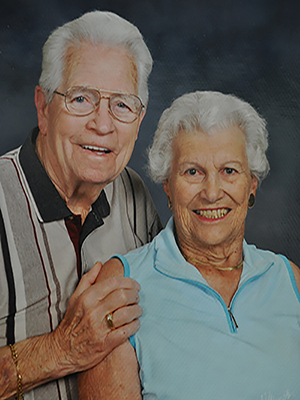When Gildard Hess was 19 years old, he moved from Iowa to Oakland, California. Gil had only completed one quarter of college before taking a job as a welder for Key Systems and Industrial Service Co., a sheet metal manufacturing business. Eventually, Gil became the owner of Industrial Service Co. and built the business from a few people to more than 150 employees.

Married for 55 years, Gil and Ann Hess created great success in life as well as business. Among Gil Hess’ innovative achievements is his patented design of the baggage carousel, which is still used today in airports around the world. After Gil retired in 1970, he and Ann moved to Del Norte County where they built their dream home at the mouth of the Smith River. Built from Gil’s own designs, the house featured his inventive amenities such as a food processor built into the kitchen countertop and an elevator for their later years.
In 1999, the Hess’ discussed plans for their estate with Humboldt Area Foundation and made an initial contribution which provided the spark that led to the creation of the Wild Rivers Community Foundation. Gil and Ann were interested in promoting volunteerism in youth and seniors and supporting educational opportunities for youth.
The next time you take your suitcase off the airport baggage carousel, imagine what inventions may come from Del Norte students, supported by Gil and Ann Hess’ generosity and vision, who were asked to make something important.
As a successful entrepreneur and inventor with limited formal education, Gil felt strongly about supporting those students who may not shine in an academic setting, but share his innovative thinking and entrepreneurial spirit. Therefore, the Gil and Ann Hess Memorial Fund is primarily dedicated to supporting innovation and entrepreneurship in Del Norte students.
Fund advisor, Kevin Hartwick remarked that, “Gil would talk about the fact that entrepreneurs perform differently as students and are inspired by different things. They fit a different set of rules that aren’t established and are often bored by traditional teaching methods.”
An example offered by Hartwick is, “In metal shop, some students may see a box as a task but an entrepreneur looks at the box and thinks of building a racecar. Gil knew that entrepreneurial students exist because he was one of them. His goal was to find them, include them in a process, fund their work and allow them to be successful. An adjustment to traditional methods of vocational education would be to ask students to make some-thing important. If it is important, they will want to learn how to do the math around it.”

